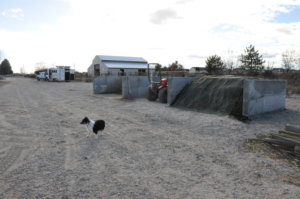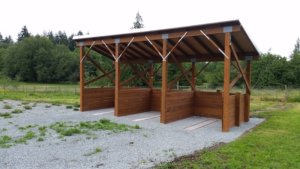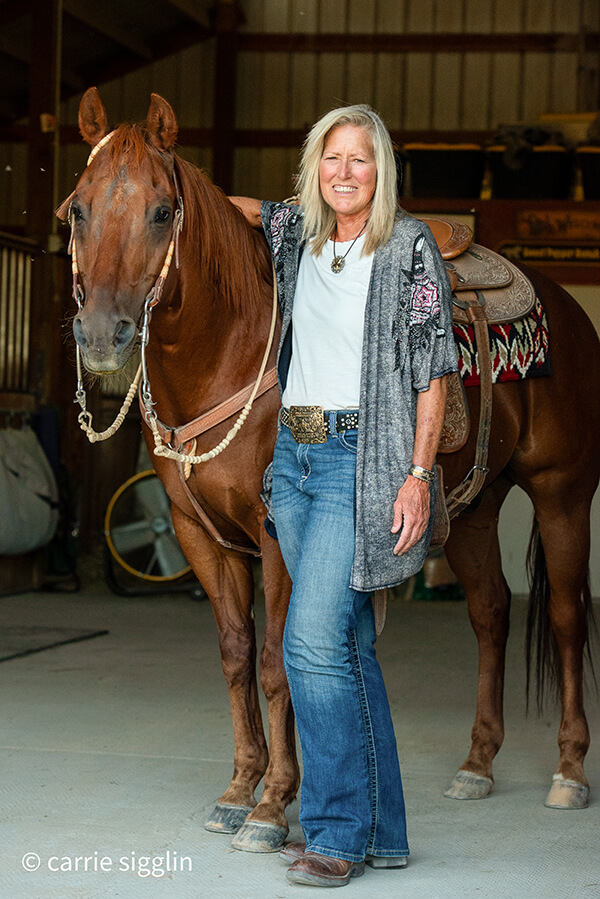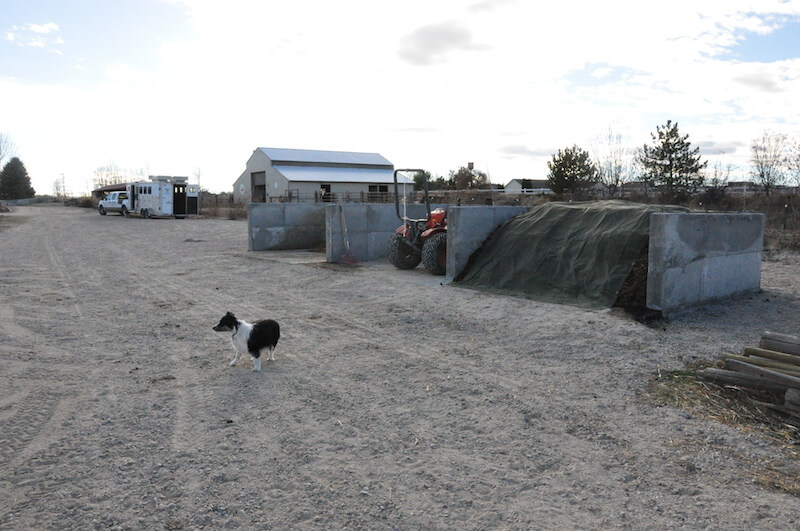Proper Moisture Level is Essential for Healthy Compost
By Alayne Blickle, Horses for Clean Water

Composting horse manure is a wonderful option for manure management. The advantages are many and have been discussed in previous articles of mine, including how to build a composting bin system. One of the key steps to creating compost is covering your piles or bins. Let’s talk about why a cover is important and what your options are.
Some sort of cover is important in the compost process to act as a moisture-barrier. During the rainy season it keeps the material from getting too soggy and becoming an inconvenient mess. When compost gets too wet, it gets heavy and pushes all the air out of the pile. This can change your pile from an aerobic composting process to anaerobic, stinky, and undesirable compost process.
The cover also keeps valuable nutrients in the compost and doesn’t allow them to get leached out where they can cause a problem for surface water, groundwater––or the neighbor’s swimming pool. Hang on to those nutrients so that later they can be put to good use back in your pastures!
A cover also helps keep compost damp by holding in moisture and not allowing it to get too dried out in the summer. Compost needs to stay as damp as a wrung-out sponge. If compost gets too dry, the beneficial bacteria and fungi in the compost will die. Depending on where you live, keeping the compost damp in summer can be just as challenging as the compost getting too wet in winter.
The material used to cover your manure pile can be as simple as a tarp or sheet of plastic. Until recently, at Sweet Pepper Ranch we composted under a roofed structure where we store hay and farm machinery. While the roof was helpful, we still added a tarp in the summer since we have so much moisture-robbing sun in our hot summers.
This past winter we built cement compost bins. We recently began reducing our plastic use (watch for future articles on this topic) so we looked around for other non-plastic options for covering the bins. We came up with water-repellent canvas tarps, made out of army-surplus-like material. We sank horseshoes into the cement walls when the structure was being poured and use these as attachment points for the tarp’s grommets.
Other options include building a roof over compost bin structures.

No matter how you choose to cover your compost, remember that your goal is to keep your compost damp but not soggy so it will still support the beneficial microbes which break it down into healthy compost.
Check the Horses for Clean Water website for new events being added all the time — and check out Alayne’s Cowgirl Retreats at SweetPepperRanch.com.
Tuesday, July 17, 2018
Farm Tour: Least Toxic Approach Managing Horse Properties
9:00 AM to 11:00 At Sweet Pepper Ranch, Nampa, ID
Join Alayne Blickle of Horses for Clean Water at her 10-acre horse property to learn about mud/dust control, manure composting, pasture management, track paddocks, confinement area management, wildlife enhancement, drought-tolerant native landscaping and more!

Alayne Blickle began in the 1990’s as a pioneer in water conservation and natural resources conservation by creating the entrepreneurial consulting business, Horses for Clean Water, an award-winning internationally acclaimed education program that looks for horse-healthy, nature-based solutions to land management challenges. She continues this work today partnering with agencies, organizations, and horse owners throughout North America and worldwide. She is a regularly contributing writer and photojournalist to several equine publications.
Alayne lives with her horse trainer husband, Matt Livengood, in southwestern Idaho where they raise and train AQHA horses and mustangs on their eco-friendly horse ranch. Contact her through the Horses for Clean Water website or through their ranch website Sweet Pepper Ranch.
For more information contact Alayne at [email protected] or 206-909-0225.






